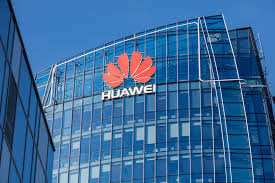Huawei recently completed the world’s first voice over NR (VoNR) call. The voice and video call service was made using two Huawei Mate 20X 5G phones on a 5G standalone (SA) network. The test call was organized by the IMT-2020 (5G) Promotion Group and was part of its China 5G enhanced technology research and development tests. The success of the call lays a solid foundation for optimizing 5G commercial devices’ user experience, and marks the maturity of the 5G end-to-end ecosystem.
The Chinese tech and telecom giant has a product line which pits it against Cisco, Ericsson and Dell – all in one, yet U.S. government agencies have serious concerns about the company’s close ties to the Chinese government. More importantly, they worry it will be difficult or impossible to detect if Huawei telecom and data products are spying or sending data back to Chinese authorities.
VoNR is a voice and video solution using in the 5G SA network architecture. The test call was based on a 5G network that Huawei built under the auspices of the IMT-2020 (5G) Promotion Group. One of the mobile phones was placed in a 5G test field at the China Academy of Information and Communications Technology while the other was placed in a 5G test field at the University of Chinese Academy of Sciences. Both sites are in Beijing, but the distance between them is over 60 km, which better simulates commercial application scenarios. Multiple voice and video calls were made, and the call completion rate was 100%. During the call, voice was clear and video was uninterrupted. Operators, Ministry of Industry and Information Technology, and China Academy of Information and Communications Technology officials who witnessed the experience were impressed, and expressed confidence in 5G’s commercial deployment.
Calls are a basic service that operators provide to meet their subscribers’ communication requirements. The test 5G VoNR call used Huawei’s end-to-end 5G commercial products, including a 5G radio access network, core network, bearer network, and 5G chips and terminals. The test call showed that the 5G new radio (NR) leverages the IP multimedia subsystem (IMS) to provide 5G voice services (VoNR). The test was also a dry run of interoperability on the 5G air interface. It verified key 5G technologies, and device and network interconnection and intercommunication under new 5G air interface standards.
Huawei’s Intelligent and Simplified 5G Core Network solution is powered by advanced Cloud Native, Connectivity+, and edge computing technologies. The solution includes key cloud-based technologies, such as three-layer decoupling, stateless design, cross-DC deployment, microservices, and A/B testing. Intelligent and Simplified 5G Core Network is also the industry’s first core network that supports full convergence of 2G, 3G, 4G, 5G NSA, and 5G SA networks. Its Single Voice Core is a simplified voice solution and its distributed, CUPS-based architecture offers plug-and-play user plane gateways. Intelligent and Simplified 5G Core Network also helps schedule heterogeneous edge computing resources on demand. It quickly integrates with third-party applications, helping to build an open edge ecosystem and provide differentiated services. The network can facilitate multiple industries’ growth.
The Huawei Mate 20X 5G mobile phone used for the call is equipped with Huawei’s Balong 5000 5G multi-mode chip. The Balong 5000 is the world’s first single-core, multi-mode 5G cellphone baseband processor. It is the first baseband processor compatible with SA and NSA network architectures and that fully supports 2G, 3G, 4G, and 5G networks. The Balong 5000 supports peak downlink speeds of 4.6 Gbps on the sub-6GHz frequency band, 6.5 Gbps on the mmWave frequency band, and 7.5 Gbps in 5G NR+LTE dual-connection mode.
5G is close to being deployed on a large scale globally, and its commercialization is steadily advancing. Huawei has signed more than 40 5G contracts with operators worldwide, and shipped more than 100,000 5G base stations.








